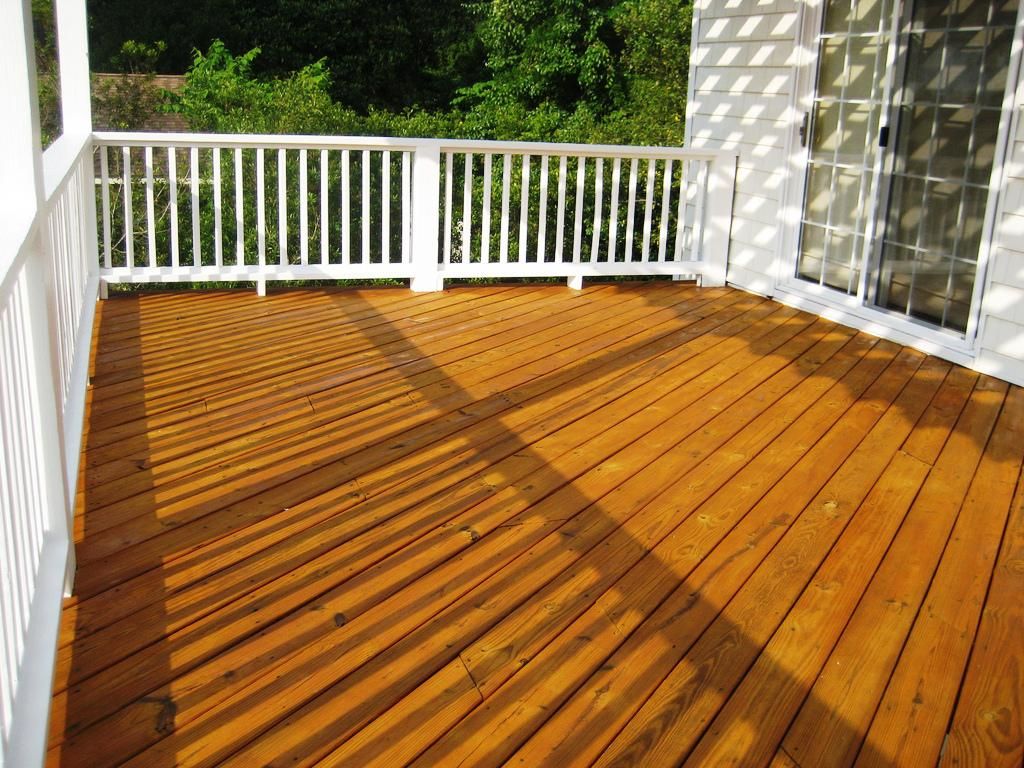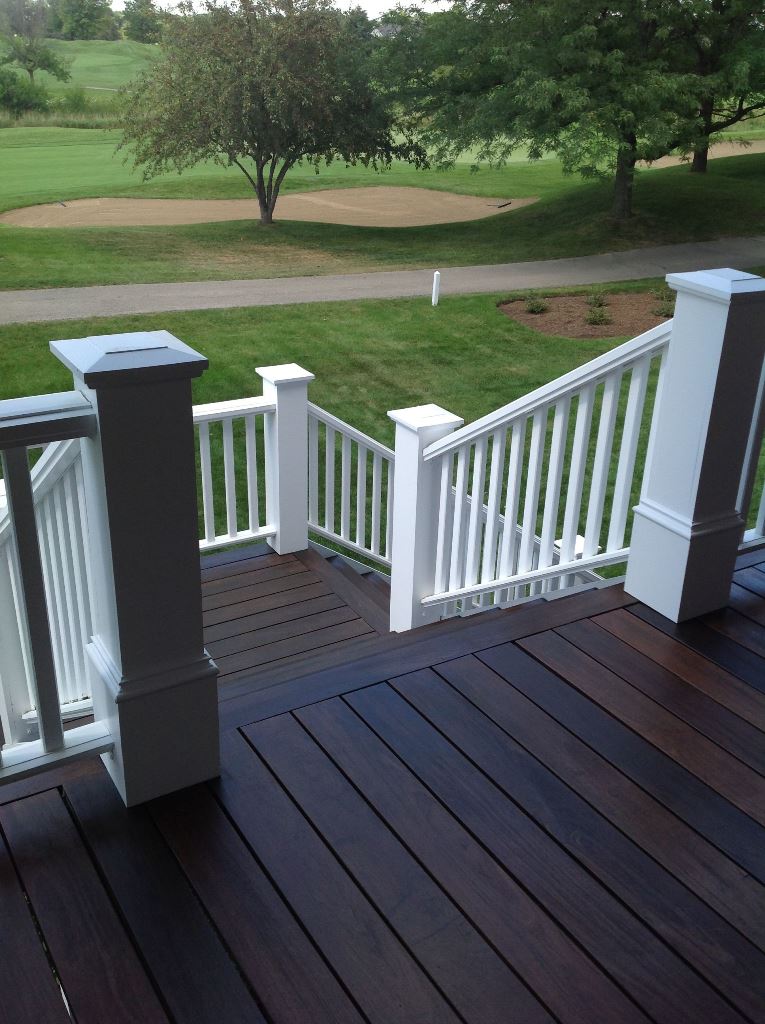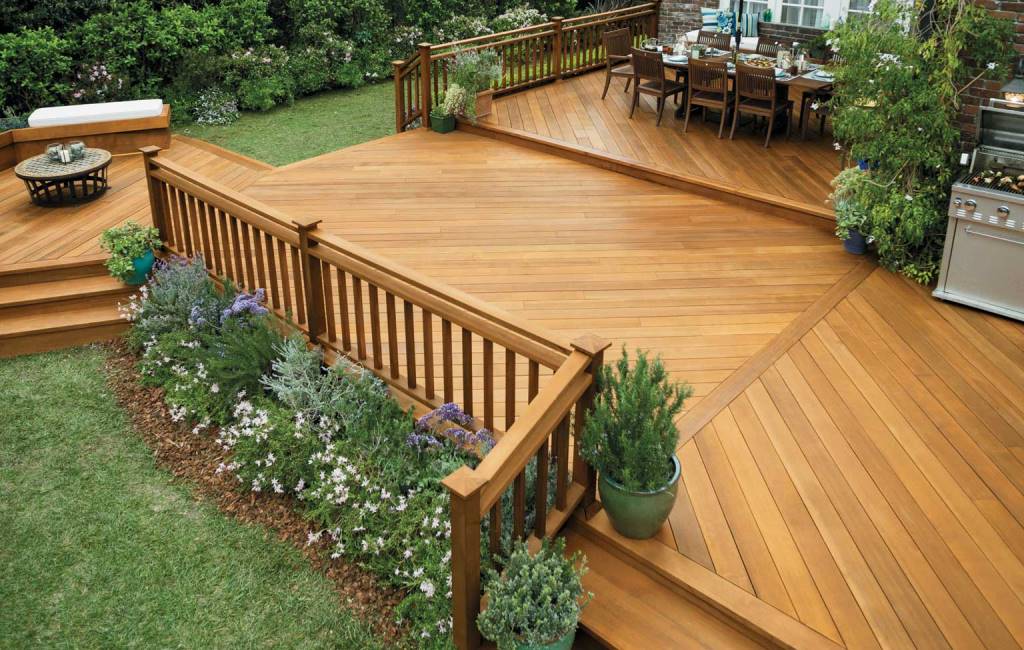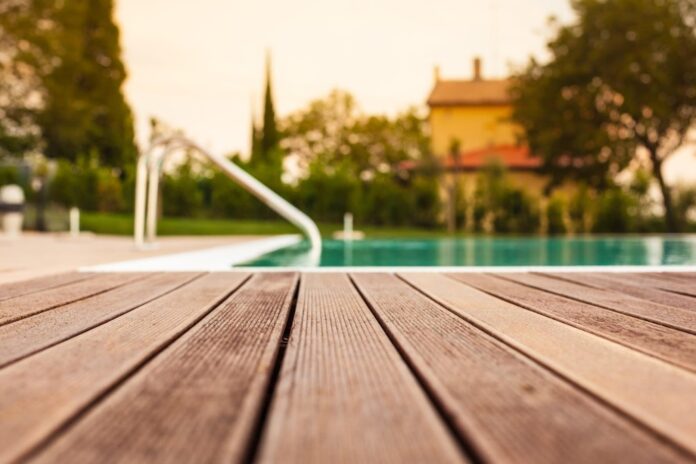After a hard day’s work of outdoor home maintenance, you notice something still isn’t quite right with your home. The siding looks new, your lawn looks pristine, yet something just feels off. After a few more minutes of studying your home, you realize it’s your old deck.
Both painting and staining add a vibrant splash of color to any dull-looking deck. You can find any color paint or stain to match or complement the exterior colors of your home. Both also help protect your deck from the sun, rain, and snow year-round.
The hardest part is deciding whether you should paint or stain your deck.
Are you trying to figure out which option is best for your deck? Read more to find out whether painting or staining is the best option for your deck needs!
Paint or Stain Deck Options

The two most common ways to add color and protect your deck is paint and stain. Both offer several benefits but you’ll find will fit your needs better than the other.
Paint creates a thick layer on top of the wood. Depending on how thick your layers are, they can hide the texture of the wood. Many homeowners with aging decks prefer to paint as it fills many of the cracks and holes in the deck.
Paint also gives you more color options. You can choose anything from a pearly white to a deep black and every color between.
A stain is much thinner than paint and rubs into the cracks and grain of the wood. This preserves the wood’s natural texture which is often preferable to those with newer wooden decks. A benefit of stain is it allows the wood to expand and contract with changing temperatures without damaging the stain coating.
Whether your paint or stain deck, both options can last for several years. Your climate, the elements, and the sun will also affect the longevity of your deck paint or stain.
How to Prep a Deck for Painting or Staining
Before you paint or stain a deck, you’ll need to find out what stain or paint is currently on your deck as this will help your determine which option to pursue. If you have a lot of old paint on your deck, you may want to stick with paint.
The first step is to clean your deck with a mold deterrent and power washer or hose to remove mold and mildew. Use a large push broom or brush to scrub the wood and then rinse. Allow the wood to completely dry.
Check your deck for any rotting boards and replace them if necessary. You may want to lightly sand old chipping paint.
If you’re planning to stain your deck, you’ll need to thoroughly remove any old paint. You may need to hire a professional to safely remove old paint.
Once the wood is clean and smooth, you’re ready to apply the paint or stain of your choice.
The Pros of Deck Paint
Paint is a good choice for homeowners with older wooden decks. As wood ages, cracks and gaps widen making the wood more susceptible to damage. You can use paint to fill cracks and cover imperfections in your deck.
Paint, depending on the color, is easier to clean compared to stain. The thicker layer of paint covers cracks preventing dirt from getting stuck. A high-quality paint will create a hard protective shell that can withstand regular washing.
Another benefit of paint is it protects the wood beneath. Most high-quality deck paints resist rot, mold, and UV damage. You can use your favorite patio furniture without worrying about damaging the wood underneath.
Deck Painting Cons

Paint can also be detrimental to your deck. Improper preparation can cause the paint to trap moisture in the wood causing it to expand and contract more with temperature changes. The paint will start to peel and crack allowing more moisture and elements to damage the deck wood.
Paint covers the natural texture and beauty of the wood. If you have a newer deck, you may prefer to preserve that natural look.
Paint is also more permanent than a stain. Going from paint to stain is very challenging, expensive, and time-consuming.
The Pros of Deck Stain
Staining your deck allows you to maintain the wood’s natural beauty while also protecting it from the elements. There are several different types of stains and stain colors designed to enhance the look of your deck.
There are opaque solid stains, semitransparent stains, and clear wood preserves. This allows you the flexibility of choosing how much wood texture remains visible. Solid stains offer the most color while clear preserves let wood maintain its natural color.
If you have unique wood like cedar, cypress, or redwood, you’ll want to keep its natural color and beauty. Stain allows you to highlight and enhance the look of the wood.
High-quality stains seep deep into the wood grain sealing it from moisture and other debris. Stain can safely protect your wood better than most paints.
Wood stain is less slippery than paint when wet. Stain preserves the texture of the wood giving it a slightly rougher surface. Paint often has a smoother surface which can become more slippery when wet.
Deck Staining Cons
Water-based deck stains only last a few years and require restraining about every other year. Oil-based stains can last up to five years but are often more expensive.
Some high-quality types of wood make staining difficult. You’ll need to opt for an oil-based stain if you want to stain tropical high-quality wood.
Wood stain doesn’t fill and hide imperfections in the wood like paint. A stain is much thinner than paint and won’t fill or fix cracks like paint.
Liven Up Your Deck Today!

Deciding whether a paint or stain deck is better depends on your existing deck. If you have an older weathered deck or one with existing pain, sticking with paint may be a better option. If you have a newer deck or existing stain, why not preserve the wood’s natural beauty with a fresh coat of stain?
Want to learn more great ways to improve your home? Check out our latest Outdoors articles to learn more about the latest tips and trends!





